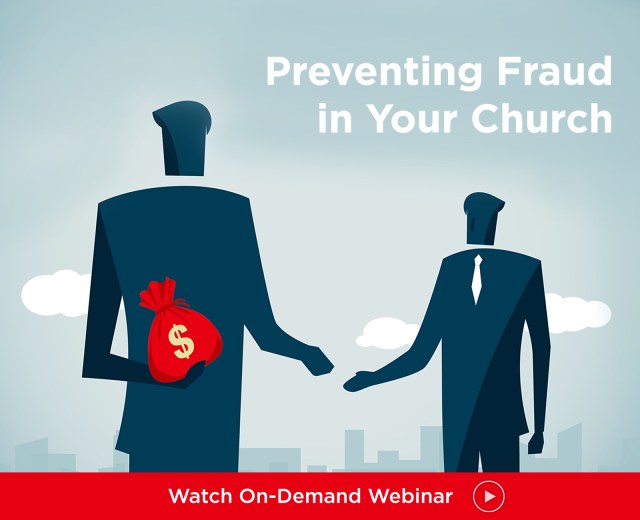• Key point 10-09.2. Some courts have found churches not liable on the basis of negligent supervision for a worker’s acts of child molestation on the ground that the church exercised reasonable care in the supervision of the victim and of its own programs and activities.
Negligence as a Basis for Liability
• Key point 10-16.3. A church is not legally responsible for an injury that occurs on its premises or in the course of one of its activities if the injury resulted from the intervention of a new and independent cause that was unforeseeable.
Negligence as a Basis for Liability
A Louisiana court ruled that a public school was not liable for the sexual assault on two female students that occurred while they were being driven home from school by other students. This case will be directly relevant to churches, since it is common for members of church youth groups to drive other members home after church services or activities. Two students (the “victims”) remained at school, after school hours, to attend their regularly scheduled band practice. They were not aware that band practice had been canceled until they arrived at the empty band room. By then, the school bus had left, and no school official was there. One of the victims attempted to call her parents for a ride home, but was unable to reach them. The victims eventually accepted a ride home with some male students. Instead of driving them home, however, the boys drove them to a field where they repeatedly raped them. The victims sued the school, claiming that it had a duty to provide “competent supervision” when a student is on campus during regular school hours, when waiting on the school grounds for a school bus, and when participating in after-hour, school-sanctioned activities. The victims claimed that the school’s breach of this duty led to their injuries. A trial court dismissed the lawsuit, and the victims appealed.
The appeals court began its opinion by noting that the school could not be guilty of negligence unless it owed the victims a duty of reasonable supervision, breached that duty, and the resulting injuries were “within the scope” of the duty. The court acknowledged that schools “owe a duty of reasonable competent supervision, which is commensurate with the students’ age and the circumstances of the case.” However, the court stressed that a school “is not the insurer of the students’ safety and lives. A school may be liable only when it has actual custody of the students entrusted to its care.” The court concluded that a school has “custody” of students, and therefore has a duty to exercise reasonable supervision over them, whenever a child is “on campus during regular school hours … waiting on the school’s grounds for a school bus, and participating in after-hour, school-sanctioned activities.” The court explained,
[W]hen parents surrender custody of their children to school authorities, whether during regular school hours or for school sanctioned after-hours activities, they, in effect, also tender the control and care of those children to the school. In essence, when the school accepts custody, it stands in the shoes of the parent regarding the authority to control the student while there; in turn, it must also assume the responsibility to supervise. Obviously, one cannot exist without the other.
Did the victims’ injuries occur while the school had custody over them? Perhaps, concluded the court.
[B]and practice was a regularly scheduled after-hours school activity to take place on the school grounds immediately following classes. The duty to supervise extended to the end of band practice when the authority for the student would, in effect, be returned to the parents. Accordingly, it stands to reason that it is the school’s responsibility to make a reasonable attempt to notify involved students of a change in the schedule, so that other arrangements for their care and supervision can be made, or to have a school official present, as it still has the responsibility for the child within the perimeters previously stated.
However, the court concluded that even if it was the school’s fault that the girls did not know practice had been canceled, and the school breached its duty of providing reasonable supervision, the school could not be liable on the basis of negligence because the injuries the victims suffered were not within the scope of the school’s duty. In other words, for the school to be negligent, an injury resulting from a breach of its duty of care must be foreseeable. This test simply was not met.
[W]e find nothing on point in the law which imposes liability for off-campus incidents comparable to our circumstances. Secondly, we deem the injuries, which [the victims] suffered, to be too remotely associated with the school’s duty. Pivotal to our finding is that [the victims] admit that they were not forced into the car, that they willingly accepted the ride. Additionally, they were teenagers; they knew the driver and had ridden with him in the past; they presented no evidence of a criminal history concerning these boys or any reason to fear them or that their parents would have objected. Thus, even if there had been supervision during this time, it would have been reasonable for the school official not to have perceived a danger, as [the victims themselves] presumably did not. And the school has no control or authority over that which happens off of school grounds. In other words, more probably than not, supervision would have yielded the same result; thus, supervision was irrelevant to the ultimate harm which [the victims] suffered.
Application. This case suggests that churches cannot be liable for assaults upon minors while being driven home from church services or activities by other minors having no official position of leadership in the church. On the other hand, this case illustrates that churches, like schools, have a duty to reasonably supervise minors over whom they have custody. Custody, according to this court, included (1) the presence of any minor on campus during regular school hours, (2) the presence of a minor on school property while waiting for a school bus, or (3) the presence of a minor on school property while participating in after-hour, school-sanctioned activity. In the church context, custody should be assumed to mean at a minimum the presence of any minor on church premises during a scheduled church activity, or the presence of a minor on church property while awaiting transportation following a scheduled church service or activity.
While the court concluded that the church was not legally responsible for the sexual assaults committed on the victims, it emphasized that this conclusion was based on the following facts: (1) the girls voluntarily got into the boys’ car; (2) the victims were teenagers rather than very young children; (3) the victims knew the driver and had ridden with him in the past; (4) there was no evidence of a criminal history concerning the boys, or any reason to fear them; (5) there was no reason to assume that the victims’ parents would have objected to their daughters’ riding with the boys. In other words, no amount of supervision on the part of the school could have prevented the assaults since the victims’ decision to ride with the boys seemed perfectly normal and non-threatening. In summary, the court’s reasoning suggests that churches may be liable for assaults on minors that occur while the minors are being driven home from a church service or activity if one or more of these factors is not present. Frederick v. Vermilion Parish School Board, S.W.2d (La. App. 2000).
© Copyright 2001 by Church Law & Tax Report. All rights reserved. This publication is designed to provide accurate and authoritative information in regard to the subject matter covered. It is provided with the understanding that the publisher is not engaged in rendering legal, accounting, or other professional service. If legal advice or other expert assistance is required, the services of a competent professional person should be sought. Church Law & Tax Report, PO Box 1098, Matthews, NC 28106. Reference Code: m67 m65 c0301




